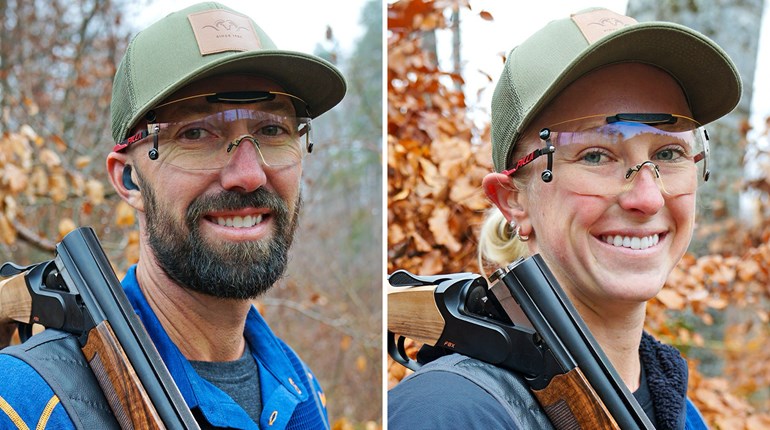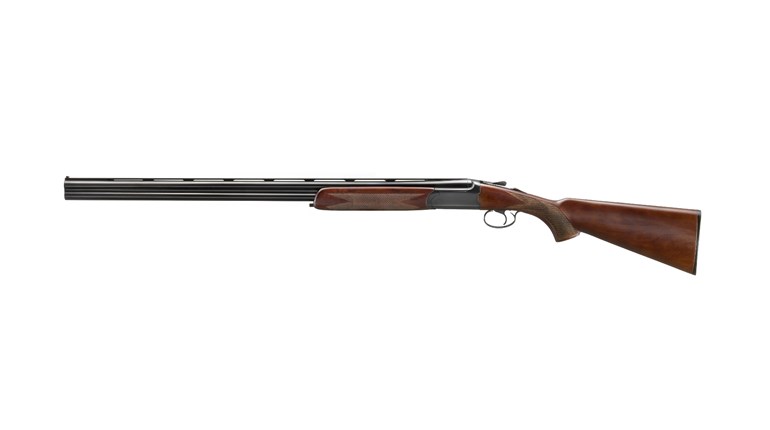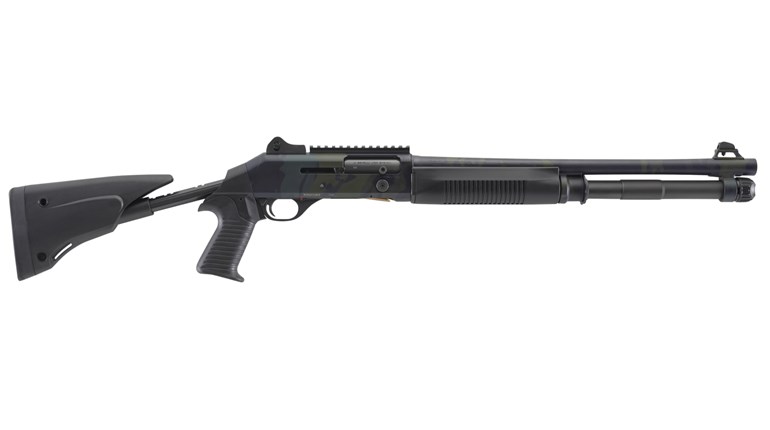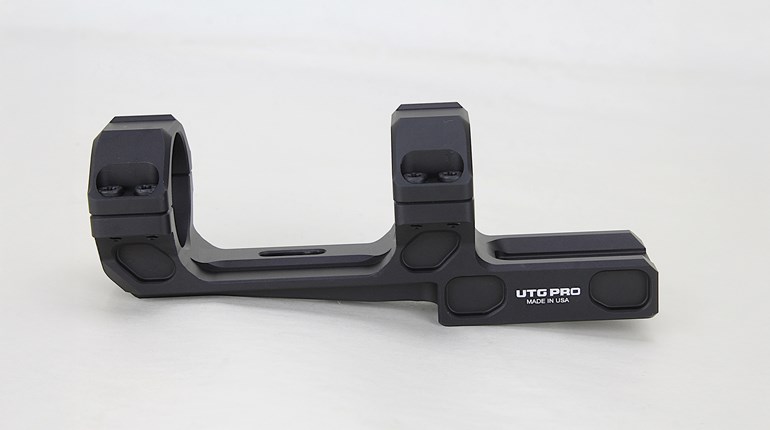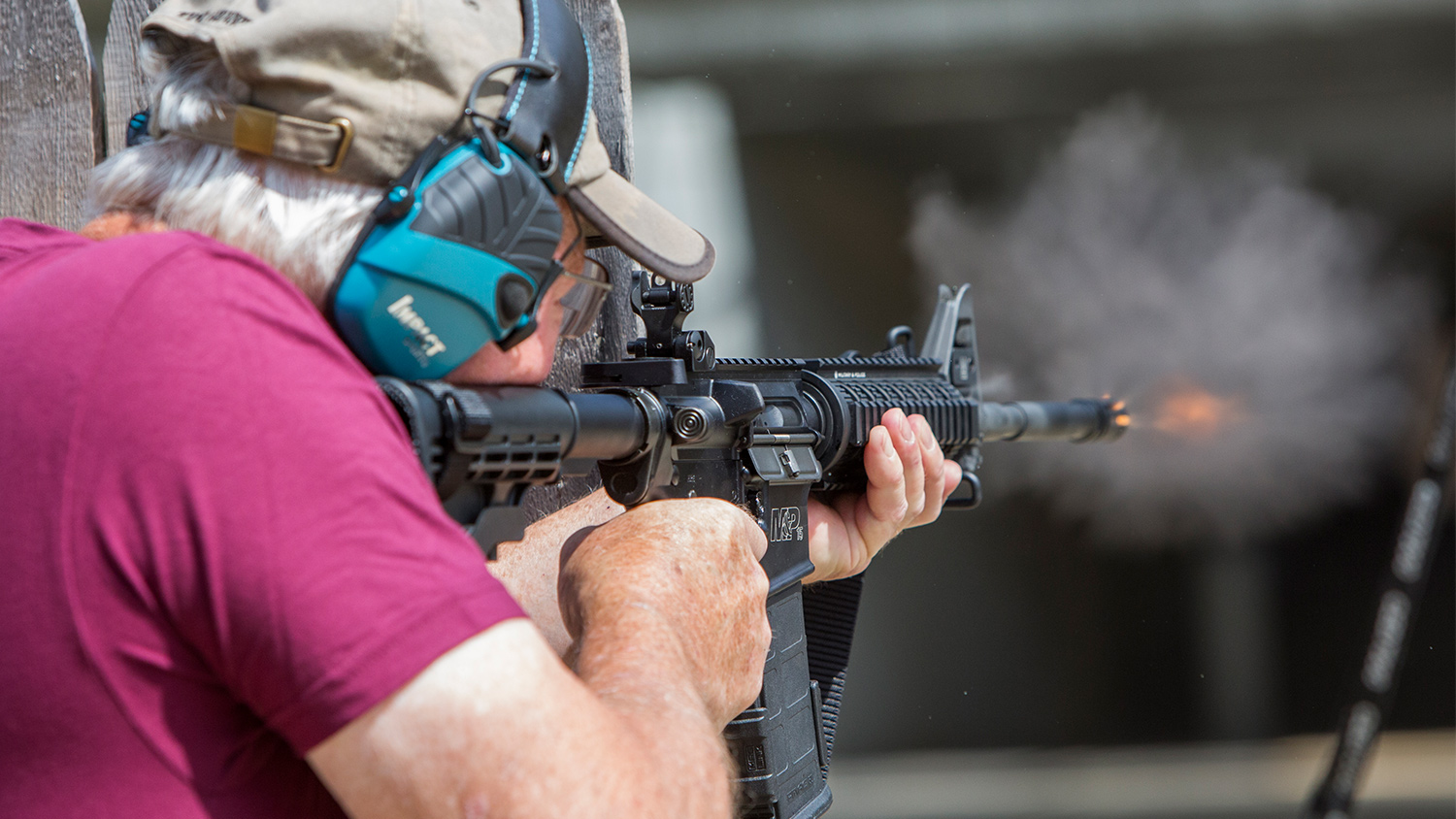
The two stages outlined below are great representatives of what to expect at NRA Tactical Police Competition (TPC) matches. These competitions offer unique training opportunities for law enforcement officers and complement NRA Police Pistol Combat matches.

TPC matches are comprised of separate courses of fire for stages, called courses. Courses may be handgun-only, rifle or shotgun-only, or other combinations of firearms. Additionally, the courses are either skills-based or scenario-based. The skills courses evaluate handling, accuracy and overall firearms proficiency, while the scenario-based ones present hypothetical encounters typical of what a law enforcement officer can see on the job.

These skill-course examples are both from the 2017 Fairfax TPC Competition, held last summer in Fairfax, VA.
Skill Course 1: Duty Rifle Skill Check
Targets: Three steel, 11 TP-1, and four TP-2
Firearms and rounds: Duty Rifle, 33 rounds
This stage has competitors start with their Duty Rifle loaded to cruiser safe (safety on, bolt closed on empty chamber with loaded magazine). Shooters start with their heels placed on the start line, and the rifle is held in the support hand by the forearm, with the muzzle downrange and the barrel parallel to the ground. On the start signal, competitors enter Firing Area 1, and engage targets and threat targets.
Moving on to Firing Area 2, competitors engage multiple threat targets, then stomp on a box activator prior to engaging target 10 and continue engaging threat targets. For Firing Area 3 and 4, there are more threat targets are fired on. There are a total of 18 targets for the stage.
Skill Course 2: Clays are Always Better with Some Steel
Targets: Six clay, eight steel
Firearms and rounds: Duty Shotgun, seven birdshot rounds; Duty Handgun, seven rounds
This stage begins with competitors having a holstered, loaded handgun and Duty Shotgun with safety on, at the shoulder ready, with the magazine tube cap resting on the Start Post. At the start signal, with the Duty Shotgun engage threat steel and clay targets. For the first target there is a first shot time requirement of 1.5 seconds. Miss this requirement, and the actual fired first shot time is added as a penalty.
Shooters then move through the Firing Area engaging multiple clay threat targets by firing under the visual barrier in front of each one. When complete, the Duty Shotgun is set in the barrel (muzzle down with safety on) and transition to the Duty Handgun. Shooters then move back through the firing area engaging the remaining threat steel targets. There are a total of 14 targets for the stage.
For more information on NRA Tactical Police Competitions, please visit lecompetitions.nra.org/tactical-police-competition or email [email protected]













